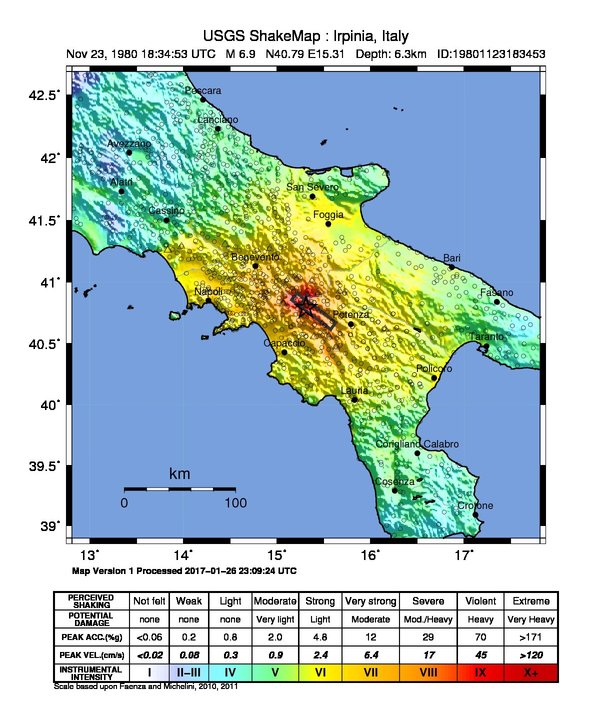Event
The quake struck at 18:34 UTC (19:34 local). The first jolt was followed by 90 aftershocks. There were three main shocks, each with epicenters in a different place, within 80 seconds. The largest shock registered a peak acceleration of 0.38g, with 10 seconds of motion greater than 0.1g. The three main shocks combined produced 70 seconds of shaking greater than 0.01g. Thus the shaking was severe and lasted a long time. Towns in the province of Avellino were hit the hardest. In Sant'Angelo dei Lombardi, 300 died, including 27 children in an orphanage, and eighty percent of the town was destroyed. One hundred were killed in Balvano when a medieval church collapsed during Sunday services. The towns of Lioni, Conza di Campania (near the epicenter), and Teora were destroyed, and dozens of structures in Naples were levelled, including a 10-story apartment building. Damage was spread over more than 26,000 km², including Naples and Salerno.
Rebuilding
The Italian government spent 59 trillion lire on reconstruction, while other nations sent contributions. West Germany contributed 32 million United States dollars (USD) and the United States US$70 million.
However, in the early nineties a major corruption scandal emerged. Of the billions of lire that were earmarked for aid to the victims and rebuilding, the largest part disappeared from the earthquake reconstruction funds in the 1980s. Of the $40 billion spent on earthquake reconstruction, an estimated $20 billion went to create an entirely new social class of millionaires in the region, $6.4 billion went to the Camorra, whereas another $4 billion went to politicians in bribes. Only the remaining $9.6 billion, a quarter of the total amount, was actually spent on people's needs.



